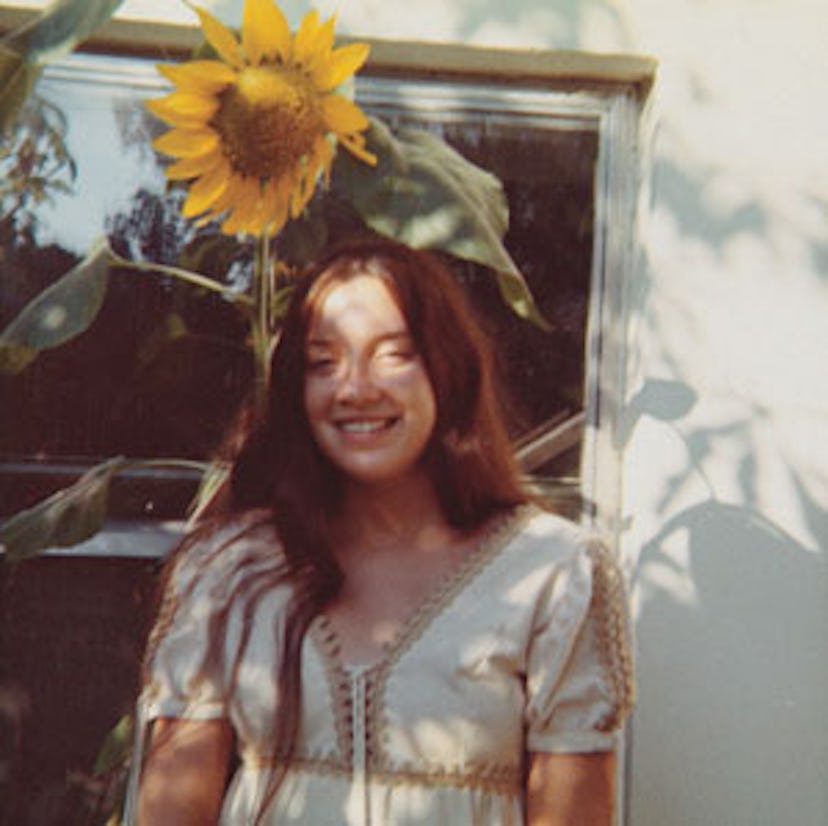Some people think a woman’s personal style is a feminist (or antifeminist) thing. You’re a feminist if you let your hair go gray; you’re not a feminist if you paint your eyelids gray—that sort of logic. Those people are wrong. One’s personal style may be misguided, but it is generally apolitical. It is, however, always psychological. How else can one explain the impulse behind the decisions a woman constantly makes in presenting herself to the world? Don’t give me marketing. Let’s talk about mothering.
My mother is a French woman who was born and raised in Casablanca, Morocco, during a time (a colonial time) when that city rivaled Paris in fashion obsession. Judging by scores of old photographs, my mother was as chic and stylish as any woman who strolled the rue du Faubourg Saint-Honoré. Even as a nine-year-old playing dress-up, I could not fully button up her skirts, so tiny was her waist. She had what the French proudly refer to as une belle poitrine, something I waited—and waited—to develop. Her waist and bust set the geometry of her swishy, swingy clothes. I took my measure, and found myself wanting. So did she.
Semiannual trips to Bonwit Teller for new dresses were a form of excruciating torture. In the dressing room I would be poked and prodded as clothes were tugged across my frame. “Those shoulders,” some old bag of a saleslady would say. “Like a boy. What is she? A swimmer?”s
My mother, who was equally appalled at the way things fit me—or didn’t—and who would never have let me develop something as vulgar as actual muscles, could see no reason for my shoulders. “Can’t you pull them in?” she would ask in frustration, confusing me, perhaps, with a turtle.
Did I learn to find clothes that made the best of what I did have? No. I was taught to focus on what I did not have. This is where one of my favorite psychoanalytic concepts makes an appearance: reaction formation. It is a useful, and, in my case, highly developed, defense mechanism in which an anxiety is mastered by an exaggerated embrace of its opposite. I have very little patience with designers who cut for turtles. Or sylphs. Or naiads. Or any of the other thimble-waisted, slope-shouldered, suspiciously large-bosomed creatures who have taken possession of the fashion imagination. In other words, I loathe Hervé Léger (because I could never squeeze into it), and I love Marni (because it always fits). And it is all because of my mother.
Clothes were only the beginning. My childhood idea of the proper lip color was ruby red. I never saw my mother without lipstick, nor did I ever see her apply it. I thought my lips would turn red as I aged. My mother’s gorgeous hazel eyes were always rimmed with liner. Her cheeks were properly rouged. By the time I was 11 or 12, I had discovered my mother’s makeup drawers. I was besotted. There was nothing I wanted more than to smear blue eye shadow across my eyelids before school, or swivel up a red lipstick. I tried. My mother was scandalized. “Do you think you are going out of this house looking like a common whore? What kind of mother will people think you have? Don’t tell me what other girls are doing. What kind of mothers do they have?” And so on. This went on for years. I begged; I pleaded; I wept; I railed.
Browning (right) with her mother and sister Nicole, 1959.
And then, suddenly, I got to high school and changed my mind. I couldn’t beat my mother, so I walked off the playing field—wearing clogs. I decided to become a feminist; feminists were against makeup. (I assumed they were pro shoulders.) Such is the power of negative psychology that, within a year, my mother was begging me to wear makeup. Buying me lipsticks. Leaving cunning little pads of blue eyeliner on my night table for me to find when I woke, as if the Tooth Fairy had turned into the Style Fairy. I was resolutely opposed.
Around the time I turned 19, and my hair was down to my waist, I lived in Paris with my cousin Colette, who is of my mother’s generation. Colette—who was always immaculately coiffed and powdered—was constantly inviting her friends over, not to meet me, but to look at me. “Les Americaines, elles sont si naturelles…,” they would exclaim with genuine wonder, as if I were on display in a zoo. “How do you do it?” they would ask, though I was clearly doing nothing. “And why?”
Eventually, the habits of a rebellion became the habits of style. Don’t get me wrong: When I have to, I “polish up nicely,” as a rather surprised man once backhandedly remarked. I keep the makeup to a minimum. I love beautiful clothes and fine fabrics; I am drawn to simple, elegant lines but want something interesting going on, too. I guess it is a grown-up version of the bohemian chic I began exploring as a teenager. I’d rather buy fewer things and spend money for quality, but I want my clothes to look great in 10 years, not dated. And I want them to feel comfortable in 10 minutes.
In the last decade, gray has crept into my chestnut hair. My mother began to go gray when she was 18; by the time she was in her 30s, people would stop to ask her where she had her “salt and pepper” streaks put in. I have always thought her hair was beautiful—its changes enthralled me. And, having achieved a certain plateau of maturity, I no longer feel the need to react against her. I find it fascinating to look nothing like my mother while at the same time managing to look profoundly like her. I am, finally, my own woman, with my own sense of style. Naturally, it’s personal.
Photos: courtesy of Dominique Browning
